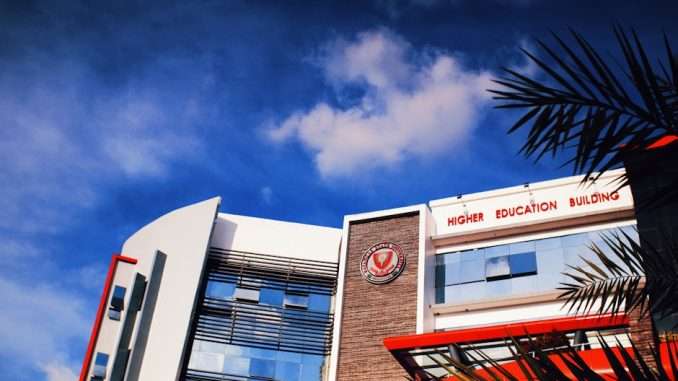
In an ambitious stride towards sustainability, the University of Liverpool has revolutionised its campus operations through the deployment of performance digital twin technology, in collaboration with Integrated Environmental Solutions (IES). This groundbreaking initiative has not only resulted in substantial cost savings but has also established a new paradigm for environmental stewardship within the higher education sector.
Read more about sustainable development.
Between April and December 2023, the university achieved an impressive £25,000 in operational cost savings, showcasing the remarkable potential of performance digital twin technology. This innovative approach has significantly enhanced the efficiency of the university’s buildings, particularly focusing on the refurbishment of HVAC systems. Initial simulations had forecasted a 14% energy savings; however, post-refurbishment real-time data revealed a staggering 23% reduction in energy consumption. These outcomes highlight the extraordinary capability of digital twin technology in driving energy efficiency and cost-effectiveness.
The built environment is responsible for approximately 40% of the UK’s carbon emissions, making the optimisation of building operations crucial in the fight against climate change. Universities, often at the forefront of research and innovation, are uniquely positioned to lead by example. However, they also face the challenge of operating historic buildings that necessitate significant renovation to improve energy efficiency. The University of Liverpool’s successful deployment of performance digital twin technology demonstrates how institutions can leverage advanced tools to refine operations and significantly reduce their environmental impact.
At the core of this initiative is IES Live, a platform that connects live data streams to the digital twin of a building, providing comprehensive operational insights. This real-time monitoring capability allows the university to track energy, carbon, and cost performance on an hourly basis, thus preventing operational drift and ensuring sustained energy savings. The live digital twin not only aids in tracking the impact of refurbishments but also identifies new opportunities for performance optimisation.
A significant advantage of digital twin technology lies in its ability to empower decision-makers with data-driven insights. By offering a clear picture of a building’s operational performance, the technology enables universities to make informed investments in sustainability. This capability is particularly crucial for the University of Liverpool, which aims to achieve net zero emissions by 2025. The live digital twin serves as a vital tool in this ambitious endeavour, facilitating continuous recalibration of energy models against measured data to maintain an accurate performance baseline.
The success of the University of Liverpool with IES Live sets a precedent for other academic institutions grappling with inefficient buildings that are not future-ready. Despite their reputation for research and innovation, many universities in the UK struggle with the energy demands of their densely populated and research-intensive buildings. The University of Liverpool’s initiative illustrates that sustainability-focused refurbishments can be both data-driven and cost-justified, providing a conducive work environment for researchers and innovators while addressing environmental concerns.
Building on its success, the University of Liverpool plans to create digital twins for three additional campus buildings. This expansion will further enhance the university’s ability to monitor and optimise building performance, reinforcing its leadership in utilising performance digital twin technology. As the first institution to implement IES Live for monitoring building performance, the University of Liverpool is paving the way for a smarter, more sustainable future in higher education.
UK universities, celebrated for their research and innovation, often grapple with the inefficiencies inherent in historic and period buildings. These structures require substantial renovation to improve energy efficiency. Digital twin technology offers a data-driven approach to these refurbishments, making them both cost-justified and impactful. The University of Liverpool’s experience demonstrates that sustainability-focused refurbishments can be effectively managed through a combination of real-time data and predictive simulations.
Moreover, digital twin technology empowers decision-makers to invest in a greener future. With real-time monitoring of building energy, carbon, and cost performance, university administrators can make informed decisions that align with sustainability goals. This technology also addresses the expectations of students, who increasingly demand that world-leading universities effectively manage their environmental impact.
The University of Liverpool’s pioneering use of performance digital twin technology marks a significant milestone in campus sustainability. Through real-time monitoring and data-driven decision-making, the university has achieved notable cost and energy savings, demonstrating the transformative potential of digital twins in optimising building operations. As the university continues to expand this initiative, it stands as a beacon of innovation and environmental stewardship, inspiring other academic institutions to follow suit in creating smarter, more sustainable campuses.
By continuing to innovate and expand their use of digital twins, the University of Liverpool is not only optimising operational efficiency but also contributing to a sustainable future. This initiative underscores the critical role that universities can play in addressing environmental challenges and highlights the transformative potential of digital twin technology in creating smarter campuses. The University of Liverpool’s forward-thinking approach serves as a model for other universities, showcasing how a commitment to sustainability can drive both economic and environmental benefits.


Be the first to comment